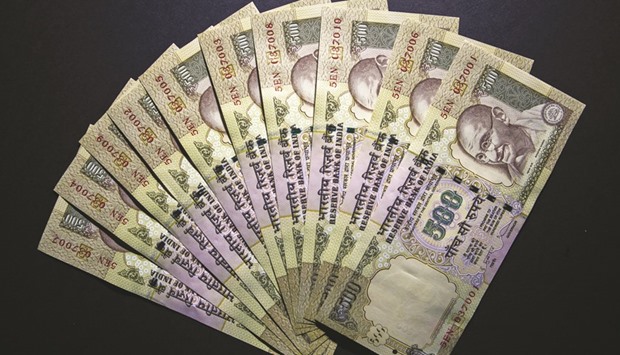A gauge of expected swings in India’s rupee dropped for a second week as foreign funds piled into the nation’s stocks amid an improving economic outlook.
Overseas investors bought a net $311mn of shares in the four days through August 4, poised for a sixth straight week of inflows. Wednesday’s passage of the goods-and-services tax bill - India’s biggest economic reform in decades that is expected to boost growth - is seen accelerating foreign purchases.
Appetite for assets in emerging markets such as India is also being spurred by optimism global central banks will keep monetary policy accommodative.
The rupee’s three-month implied volatility, used to price options, slid 28 basis points from July 29 to 5.79% in Mumbai, the least since 2008, data compiled by Bloomberg show.
The currency gained 0.3% last week to 66.7750 per dollar in the spot market, after climbing 0.8% in July, its first monthly advance since March.
“The passage of GST amid inflows will further boost the sentiment toward India,” said Rohan Lasrado, Mumbai-based head of foreign-exchange trading at RBL Bank. “Opening up of the money taps by global central banks means more and more funds will be flowing toward emerging markets.”
After a decade of wrangling, the upper house of India’s parliament on Wednesday night unanimously approved legislation to establish a nationwide levy known as GST.
The move clears the biggest hurdle to unifying India’s 1.3bn people into a single market for the first time by next year and strengthens Prime Minister Narendra Modi’s credentials of being able to push through difficult legislation.
Finance Minister Arun Jaitley has said the GST will add as much as two percentage points to India’s economic growth, which is already the fastest among the world’s major economies.
Foreign holdings of rupee-denominated government and corporate notes fell by a net Rs14.1bn ($211mn) in the four days through Thursday, after increasing for five straight weeks in the longest stretch since April 2015.
The yield on sovereign notes due January 2026 was little changed from July 29 at 7.17%, according to the central bank’s trading system. The yield fell in each of the previous six weeks and dropped to 7.14% on Monday, the lowest close for a benchmark 10-year security since May 2013.

RUPEE


